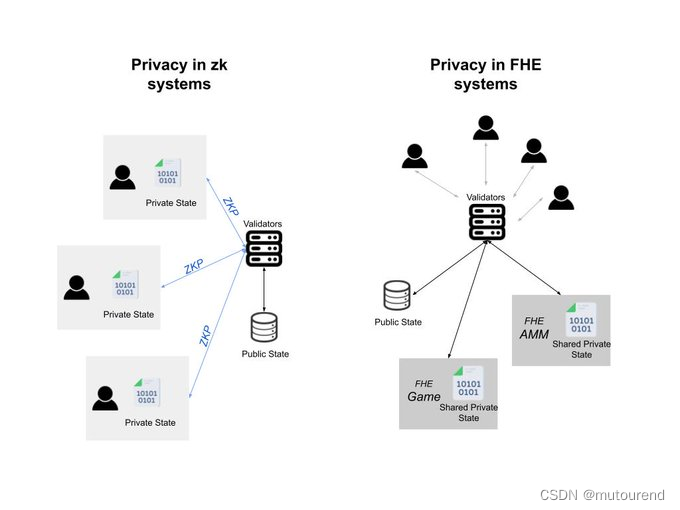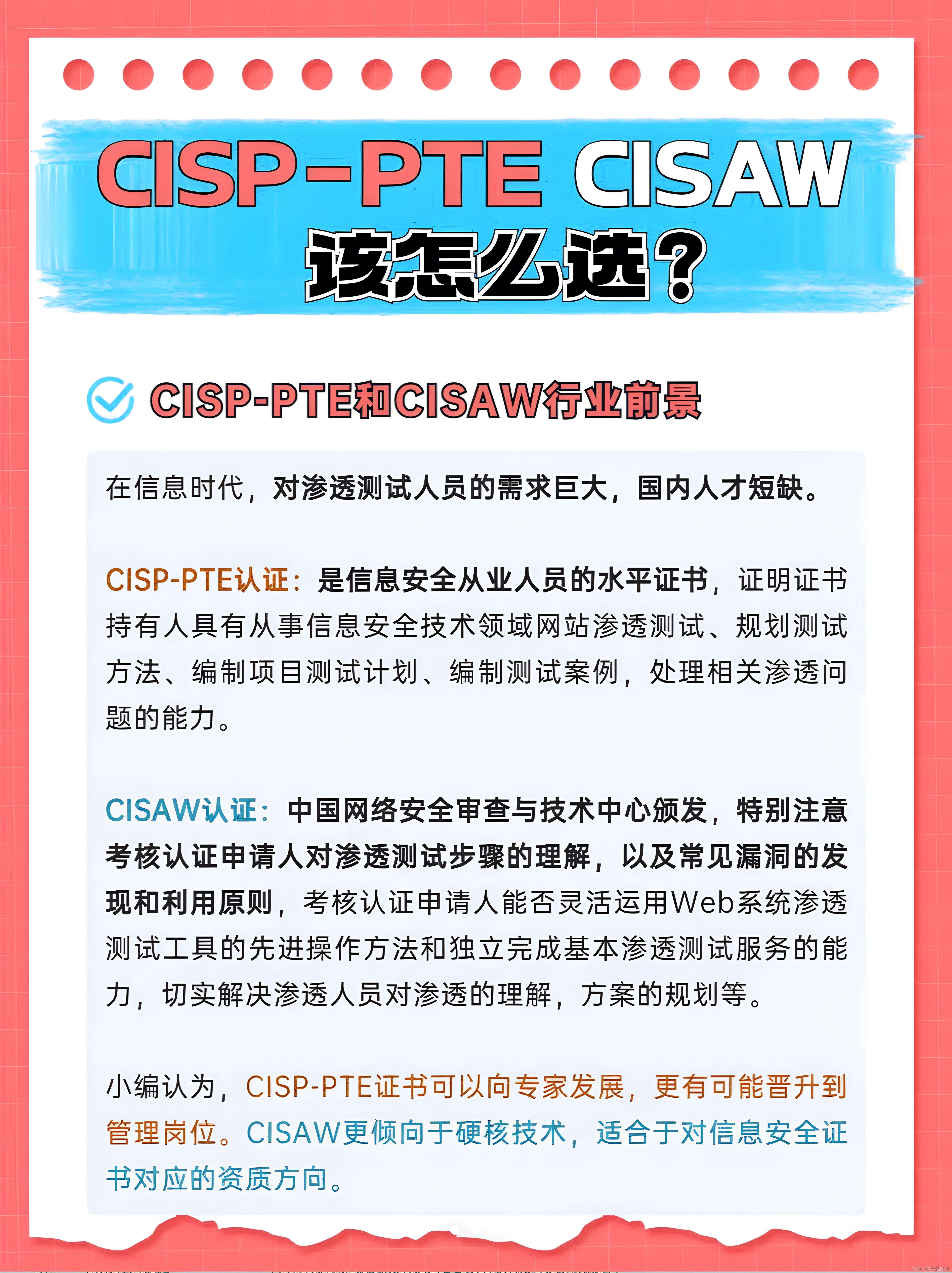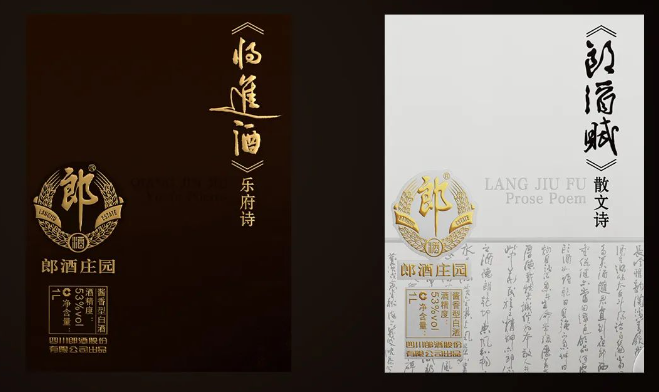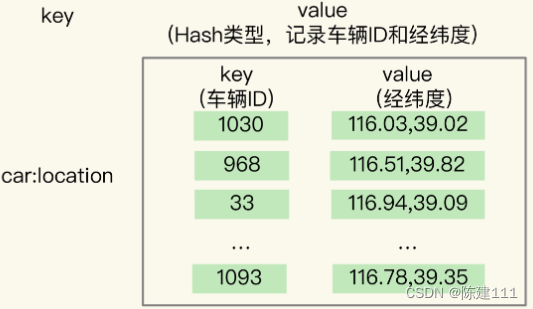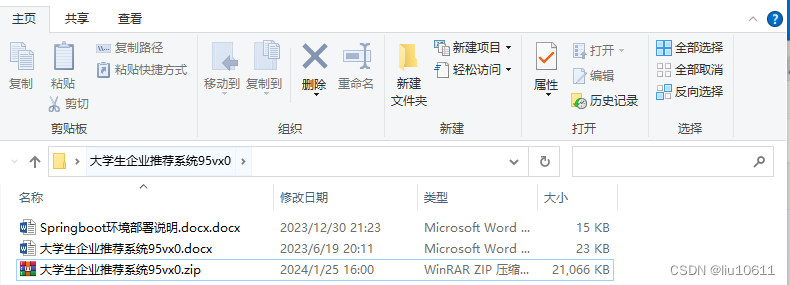其他常见模式链接:
【设计模式】迭代器模式(迭代子模式):遍历集合无忧,灵活性满满,支持多种遍历方式,应对不同需求,集合遍历神器,轻松应对复杂场景,优雅遍历,提升代码质量-CSDN博客
【设计模式】深入理解责任链模式的工作原理,责任链模式的多重应用场景:从权限管理到审批流程,在日志记录系统中的应用,在网络中实现动态请求处理-CSDN博客
【设计模式】深入理解状态模式:如何优雅地管理对象的状态和行为,打造流畅的角色状态管理系统,深入分析上下文、状态和具体状态的作用,从理论到实践的完整指南-CSDN博客
前言:
组合模式是一种结构型设计模式,它允许将对象组合成树形结构以表示“部分-整体”的层次结构。通过组合模式,客户端可以以统一的方式处理单个对象和组合对象,从而简化了对复杂对象结构的操作和管理。组合模式的核心思想是将叶节点和组合节点统一对待,使得客户端可以一致地处理它们,从而提高了系统的灵活性和可扩展性。在组合模式中,抽象组件类定义了统一的接口,叶节点类表示单个对象,而组合节点类包含了子对象。组合模式常用于构建树形结构的系统,例如文件系统、菜单系统等。通过合理地应用组合模式,可以使系统具有更好的可维护性、扩展性和复用性。
一、原理及示例代码
组合模式是一种结构设计模式,它允许你将对象组合成树形结构以表示“部分-整体”的层次结构。组合模式使得客户端对单个对象和组合对象的使用具有一致性,因为它们都遵循相同的接口。
在组合模式中,有两种主要类型的对象:叶节点和组合节点。叶节点表示树的最底层对象,它们没有子节点。组合节点表示树的分支节点,它们可以包含子节点,可以是叶节点,也可以是其他组合节点。
下面是一个使用组合模式的C++代码示例,该示例模拟了一个文件系统的树形结构:
#include <iostream>
#include <string>
#include <vector>
// 抽象组件类
class Component {
public:
virtual void operation() = 0;
virtual void add(Component* component) {}
virtual void remove(Component* component) {}
virtual Component* getChild(int index) { return nullptr; }
};
// 叶节点类
class File : public Component {
private:
std::string name;
public:
File(std::string name) : name(name) {}
void operation() {
std::cout << "File: " << name << std::endl;
}
};
// 组合节点类
class Directory : public Component {
private:
std::string name;
std::vector<Component*> children;
public:
Directory(std::string name) : name(name) {}
void operation() {
std::cout << "Directory: " << name << std::endl;
for (Component* child : children) {
child->operation();
}
}
void add(Component* component) {
children.push_back(component);
}
void remove(Component* component) {
// 实现删除操作
}
Component* getChild(int index) {
if (index >= 0 && index < children.size()) {
return children[index];
}
return nullptr;
}
};
int main() {
Component* file1 = new File("file1.txt");
Component* file2 = new File("file2.txt");
Component* directory1 = new Directory("Folder1");
Component* directory2 = new Directory("Folder2");
directory1->add(file1);
directory1->add(file2);
directory1->add(directory2);
directory1->operation();
return 0;
}
在上面的示例中,Component 是抽象组件类,File 是叶节点类,Directory 是组合节点类。客户端代码创建了一些文件和文件夹,并将它们组合成了一个树形结构,然后调用了根节点的 operation 方法来遍历整个树形结构并输出结果。
二、结构图
以下是组合模式的结构图:
-----------------------------------------
| Component |
-----------------------------------------
| + operation() : void |
| + add(c: Component) : void |
| + remove(c: Component) : void |
| + getChild(index: int) : Component |
-----------------------------------------
/ \
/ \
/ \
-----------------------------------------
| Leaf |
-----------------------------------------
| + operation() : void |
-----------------------------------------
-----------------------------------------
| Composite |
-----------------------------------------
| + operation() : void |
| + add(c: Component) : void |
| + remove(c: Component) : void |
| + getChild(index: int) : Component |
-----------------------------------------三、使用场景
组合模式通常在以下情况下使用:
当你有一个对象树结构,并希望客户端能够以统一的方式处理树中的所有对象时,可以使用组合模式。这种情况下,无论是单个对象还是组合对象,客户端都可以通过相同的接口进行操作。
当你希望在不同层次结构中处理对象时,可以使用组合模式。例如,文件系统中的文件和文件夹,图形界面中的控件和容器等都可以使用组合模式来处理。
当你希望能够忽略对象与组合对象之间的差异,并希望以统一的方式处理它们时,可以使用组合模式。这样可以简化客户端的代码,提高代码的可维护性。
总之,组合模式适用于需要构建树形结构,并希望以统一的方式处理树中的所有对象的情况。
场景示例:
当你有一个对象树结构,并希望客户端能够以统一的方式处理树中的所有对象时,可以使用组合模式。这种情况下,无论是单个对象还是组合对象,客户端都可以通过相同的接口进行操作。
以下是一个使用组合模式的C++示例代码,模拟了一个组织结构的树形结构:
#include <iostream>
#include <string>
#include <vector>
// 抽象组件类
class Employee {
public:
virtual void print() = 0;
virtual void add(Employee* employee) {}
virtual void remove(Employee* employee) {}
virtual Employee* getChild(int index) { return nullptr; }
};
// 叶节点类
class Worker : public Employee {
private:
std::string name;
public:
Worker(std::string name) : name(name) {}
void print() {
std::cout << "Worker: " << name << std::endl;
}
};
// 组合节点类
class Manager : public Employee {
private:
std::string name;
std::vector<Employee*> subordinates;
public:
Manager(std::string name) : name(name) {}
void print() {
std::cout << "Manager: " << name << std::endl;
for (Employee* subordinate : subordinates) {
subordinate->print();
}
}
void add(Employee* employee) {
subordinates.push_back(employee);
}
void remove(Employee* employee) {
// 实现删除操作
}
Employee* getChild(int index) {
if (index >= 0 && index < subordinates.size()) {
return subordinates[index];
}
return nullptr;
}
};
int main() {
Employee* worker1 = new Worker("Alice");
Employee* worker2 = new Worker("Bob");
Employee* manager1 = new Manager("John");
Employee* manager2 = new Manager("Tom");
manager1->add(worker1);
manager1->add(worker2);
manager1->add(manager2);
manager1->print();
return 0;
}
在这个示例中,Employee 是抽象组件类,Worker 是叶节点类,Manager 是组合节点类。客户端代码创建了一些员工和经理,并将它们组合成了一个组织结构的树形结构,然后调用了根节点的 print 方法来遍历整个树形结构并输出结果。
这个示例展示了组合模式的使用场景之一:当你有一个对象树结构,并希望客户端能够以统一的方式处理树中的所有对象时。
以下是一个使用组合模式的C++示例代码,模拟了文件系统中的文件和文件夹的层次结构:
#include <iostream>
#include <string>
#include <vector>
// 抽象组件类
class FileSystemComponent {
public:
virtual void display() = 0;
virtual void add(FileSystemComponent* component) {}
virtual void remove(FileSystemComponent* component) {}
virtual FileSystemComponent* getChild(int index) { return nullptr; }
};
// 叶节点类 - 文件
class File : public FileSystemComponent {
private:
std::string name;
public:
File(std::string name) : name(name) {}
void display() {
std::cout << "File: " << name << std::endl;
}
};
// 组合节点类 - 文件夹
class Folder : public FileSystemComponent {
private:
std::string name;
std::vector<FileSystemComponent*> children;
public:
Folder(std::string name) : name(name) {}
void display() {
std::cout << "Folder: " << name << std::endl;
for (FileSystemComponent* child : children) {
child->display();
}
}
void add(FileSystemComponent* component) {
children.push_back(component);
}
void remove(FileSystemComponent* component) {
// 实现删除操作
}
FileSystemComponent* getChild(int index) {
if (index >= 0 && index < children.size()) {
return children[index];
}
return nullptr;
}
};
int main() {
FileSystemComponent* file1 = new File("document1.txt");
FileSystemComponent* file2 = new File("document2.txt");
FileSystemComponent* folder1 = new Folder("Folder1");
FileSystemComponent* folder2 = new Folder("Folder2");
folder1->add(file1);
folder1->add(file2);
folder1->add(folder2);
folder1->display();
return 0;
}
在这个示例中,FileSystemComponent 是抽象组件类,File 是叶节点类,Folder 是组合节点类。客户端代码创建了一些文件和文件夹,并将它们组合成了一个文件系统的层次结构,然后调用了根节点的 display 方法来遍历整个文件系统并输出结果。
这个示例展示了组合模式的另一个使用场景:当你希望在不同层次结构中处理对象时,可以使用组合模式。
四、组合模式优缺点
组合模式是一种结构型设计模式,它允许客户端以统一的方式处理单个对象和组合对象。这种模式有一些优点和缺点,让我们一起来看一下:
优点:
- 统一处理:组合模式允许客户端以统一的方式处理单个对象和组合对象,无需知道对象的具体类型,从而简化了客户端代码。
- 灵活性:组合模式使得系统具有很高的灵活性,可以在不同层次结构中组合对象,从而轻松地构建复杂的树形结构。
- 可扩展性:通过组合模式,可以轻松地添加新的组件类,而不需要对现有代码进行修改,从而提高了系统的可扩展性和可维护性。
缺点:
- 可能会过于一般化:组合模式可能会导致设计过于一般化,使得某些特定操作变得困难。例如,如果需要对组合对象和叶节点对象采取不同的行为,可能需要引入额外的逻辑来区分它们。
- 可能会增加复杂性:在某些情况下,使用组合模式可能会增加系统的复杂性,特别是当需要处理大量的细粒度对象时,可能会导致性能问题。
总的来说,组合模式适用于需要以统一的方式处理单个对象和组合对象的场景,能够提高系统的灵活性和可扩展性。然而,在使用组合模式时,需要权衡好通用性和特定性之间的关系,以避免过度一般化和增加系统复杂性的问题。
五、组合模式常见面试题
组合模式是面向对象设计中的一种常见模式,可能会在面试中被问及。以下是一些常见的关于组合模式的面试题以及参考答案:
什么是组合模式? 参考答案:组合模式是一种结构型设计模式,它允许客户端以统一的方式处理单个对象和组合对象。它将对象组织成树形结构,使得客户端可以统一地处理单个对象和组合对象,而无需知道对象的具体类型。
请举例说明组合模式的应用场景。 参考答案:组合模式适用于需要以统一的方式处理单个对象和组合对象的场景,例如文件系统中的文件和文件夹,菜单中的菜单项和子菜单等。
组合模式中的角色有哪些? 参考答案:组合模式中包含抽象组件类(Component)、叶节点类(Leaf)和组合节点类(Composite)。
请简要描述组合模式的结构。 参考答案:组合模式的结构包括抽象组件类(Component)、叶节点类(Leaf)和组合节点类(Composite)。抽象组件类定义了统一的接口,叶节点类实现了该接口并表示单个对象,组合节点类也实现了该接口并包含了子对象。
组合模式和装饰模式有何区别? 参考答案:组合模式和装饰模式都是结构型设计模式,但它们的目的不同。组合模式用于构建树形结构,允许客户端以统一的方式处理单个对象和组合对象;而装饰模式用于动态地给对象添加额外的职责。
请说明组合模式的优点和缺点。 参考答案:组合模式的优点包括统一处理、灵活性和可扩展性,缺点包括可能过于一般化和增加复杂性。
你在项目中是如何使用组合模式的?请举例说明。 参考答案:在项目中,我使用组合模式来构建菜单系统,其中菜单项和子菜单都是组件,客户端可以以统一的方式处理它们。
组合模式和命令模式有何联系? 参考答案:组合模式和命令模式都是结构型设计模式,它们可以结合使用来构建具有复杂命令结构的系统。
如何实现组合模式中的安全模式和透明模式? 参考答案:在组合模式中,安全模式将叶节点和组合节点分别定义为不同的接口或类,透明模式则将它们定义为相同的接口或类。
请说明在使用组合模式时需要注意的问题。 参考答案:在使用组合模式时,需要注意权衡通用性和特定性之间的关系,避免过度一般化和增加系统复杂性的问题。同时,需要考虑如何处理组合对象和叶节点对象的差异。


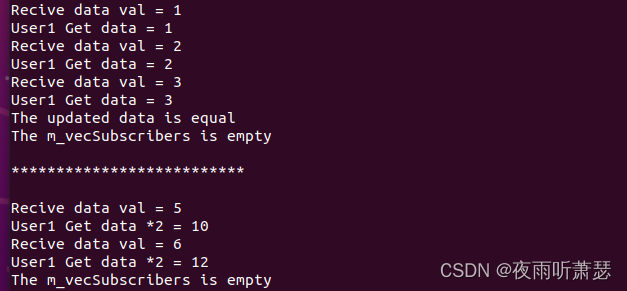



















![【C++入门到精通】特殊类的设计 | 单例模式 [ C++入门 ]](https://img-blog.csdnimg.cn/direct/32ed20b44d704746a77da19b16d060e5.jpeg)
